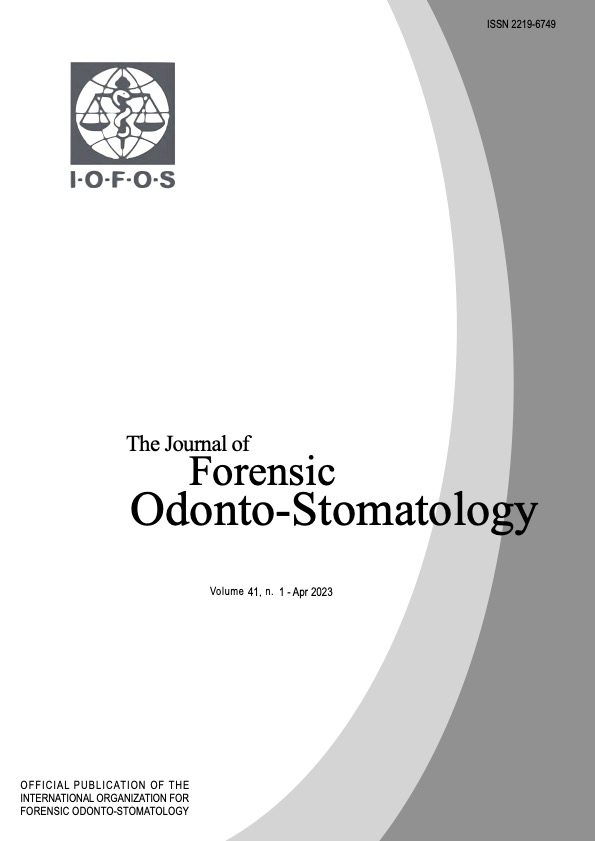Validation of radiographic visibility of root pulp in mandibular first, second and third molars in the prediction of 21 years in a sample of south Indian population: A digital panoramic radiographic study
Keywords:
Forensic age estimation, Root pulp visibility, First molars, Second molars, Third molars, 21 yearsAbstract
This study examines the radiographic visibility of root pulp (RPV) in lower first, second and third molars for the validation of completion of 21 years. RPV in all lower three molars of both sides was assessed using a sample of 930 orthopantomograms of individuals aged between 15 and 30 years. The scoring of RPV was done using the Olze et al. four- stage classification (Int J Legal Med 124(3):183–186, 2010). Cut- off values were determined for each molar using the receiver operating characteristic (ROC) curve and the area under the ROC curve (AUC). The selected cut- off values were stage 3 for first molar, stage 2 for second molar and stage 1 for third molar. For lower first molar, the AUC was 0.702 and the sensitivity, specificity and posttest probability (PTP) were 60.1%, 98.8% and 98.1% in males; and 64.5%, 99.1% and 98.6% in females. For lower second molar, the AUC was 0.828 and the sensitivity, specificity and PTP were 75.5%, 97% and 96.2% in males; and 74.4%, 96.3% and 95.3% in females. For lower third molar, the AUC was 0.906 and the sensitivity was 74.1% and 64.4% in males and females, while specificity and PTP were 100% in both sexes. The accuracy of predictions for the completion of 21 years was high. However, the greater percentage of false negatives and inapplicability of this method in one- third of lower third molars have recommended for the use of this method in conjunction with other dental or skeletal methods.

